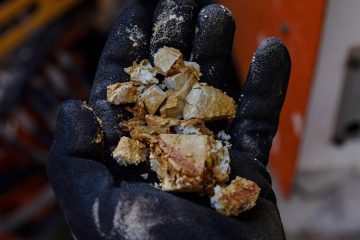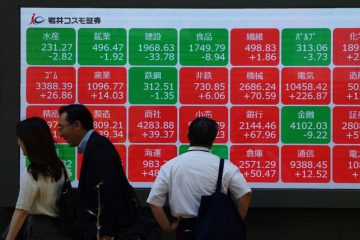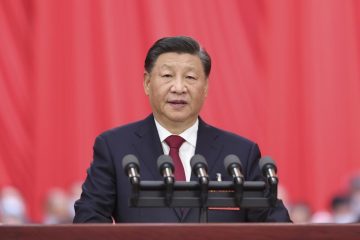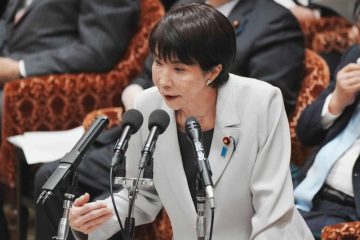| Symbol | Last | Change | % | High | Low |
|---|---|---|---|---|---|
| JPY / AUD | 0.9645 | +0.0006 | +0.06% | 0.0000 | 0.0000 |
| Close | GMT Time : Sat Dec 13 2025 01:37 | ||||
JPY/AUD : Intraday Live Chart
JPY/AUD : Technical Signal Buy & Sell
| 5 Min Signal | 1 Hour Signal | 1 Day Signal |
|---|---|---|
| Buy | Sell | Sell |
JPY/AUD : Moving Averages
| Period | MA 20 | MA 50 | MA 100 |
|---|---|---|---|
| 5 Minutes | 0.96 | 0.96 | 0.96 |
| 1 Hour | 0.96 | 0.96 | 0.96 |
| 1 Day | 0.98 | 0.99 | 1.00 |
| 1 Week | 1.01 | 1.04 | 1.02 |
JPY/AUD : Technical Resistance Level
| Resistance 1 - R1 | Resistance 2 - R2 | Resistance 3 - r3 |
|---|---|---|
| 0.0000 | 0.0000 | 0.0000 |
JPY/AUD : Technical Support Level
| Support 1 - S1 | Support 2 - S2 | Support 3 - S3 |
|---|---|---|
| 0.0000 | 0.0000 | 0.0000 |
JPY/AUD : Periodical High, Low & Average
| Period | High Change from Last | Low Change from Last | Average Change from Last |
|---|---|---|---|
| 1 Week | 0.9714 -0.0069 | 0.0000 +0.9645 | 0.9656 -0.0011 |
| 1 Month | 0.9922 -0.0277 | 0.0000 +0.9645 | 0.9794 -0.0149 |
| 3 Month | 1.0305 -0.0660 | 0.0000 +0.9645 | 1.0008 -0.0363 |
| 6 Month | 1.0719 -0.1074 | 0.0000 +0.9645 | 1.0163 -0.0518 |
| 1 Year | 1.1557 -0.1912 | 0.0000 +0.9645 | 1.0326 -0.0681 |
JPY/AUD : Historical Chart
JPY to AUD Exchange Rate History: Low-Yield Meets Commodity Powerhouse
The JPY to AUD exchange rate reflects a unique contrast between Japan’s low-yield, export-driven economy and Australia’s commodity-exporting, high-interest-rate profile. As a currency pair, it has long captured the dynamics of risk aversion vs. risk appetite, often used in carry trade strategies where investors borrow in yen and invest in AUD for yield gains.
1990s: Japan’s Lost Decade vs. AUD Recovery
Following the collapse of Japan’s asset bubble in the early 1990s, the yen remained strong despite deep recessions.
JPY/AUD ranged between 90 to 120.
The Bank of Japan began experimenting with zero interest rates, supporting a weaker yen over time.
The Australian dollar remained volatile due to mining sector cyclicality.
Japan’s deflation kept interest rates low, while Australia slowly pulled itself out of its early ’90s recession.
2000–2008: Carry Trade Takes Off
This period witnessed the rise of the yen carry trade, where investors borrowed yen at low rates and invested in high-yield currencies like the AUD.
JPY/AUD moved from ~90 in 2000 to ~100–105 by 2007.
Australia’s economy boomed on the back of China’s infrastructure surge and high iron ore prices.
Japan maintained ultra-low rates, while Australia offered among the highest G10 yields.
Despite periodic risk-off pullbacks (like during SARS or geopolitical events), the broader trend favored AUD strength.
2008–2012: Financial Crisis and Reversal
During the 2008 global financial crisis:
Investors unwound carry trades, causing JPY/AUD to plummet to ~55 in late 2008.
Yen soared as a safe haven, while AUD collapsed amid global risk aversion.
But as risk appetite returned:
AUD rebounded sharply.
JPY/AUD climbed back to ~88 by 2012, aided by Australia’s mining resilience.
This era emphasized the pair’s sensitivity to global market volatility and central bank divergence.
2013–2019: Abenomics and AUD Softening
With Shinzo Abe’s return in 2012, Abenomics and massive BOJ easing pressured the yen.
JPY/AUD gradually weakened to ~95–100.
The Bank of Japan implemented negative interest rates, contrasting starkly with Australia’s still-positive rates.
However, from 2015, Australia faced slowing mining growth and falling commodity prices.
By 2019, the pair traded mostly between ~75 to 85, showing a balancing act between yen softness and AUD weakness.
2020–2024: Pandemic Turbulence and Diverging Recoveries
The COVID-19 shock disrupted both economies but affected them differently:
JPY/AUD dropped to ~63 in 2020 as the yen strengthened amid risk aversion.
As commodity prices surged in 2021 and Australia recovered quickly, the AUD regained ground.
Japan’s prolonged reopening and deflationary concerns kept yen under pressure.
By 2023, JPY/AUD returned to ~95, supported by rate hikes from the RBA and ongoing BOJ dovishness.
As of April 2025, JPY to AUD trades around 98.2, with expectations of a possible yen rebound if the BOJ tightens policy modestly or global risk sentiment deteriorates. For now, the interest rate differential keeps the AUD favored in the pair.
✅ Key
🟢 = JPY appreciated vs AUD
❌ = JPY depreciated vs AUD
⚠️ = Mixed / Sideways trend
📊 JPY to AUD Exchange Rate by Decade
| Decade | Avg. JPY/AUD Rate (Approx) | Change vs. Previous Decade | Key Events |
|---|---|---|---|
| 1990s | 90 – 120 | ⚠️ Rangebound | Japan’s stagnation, AUD volatility |
| 2000s | 90 → 100+ | ❌ AUD rally | Carry trade boom, strong Australian growth |
| 2010s | 55 → 88 | 🟢 Yen rebound then fall | 2008 crisis, Abenomics, commodity slowdown |
| 2020s (till 2025) | 63 → 98 | ❌ Yen weakened | Pandemic, BOJ easing vs. RBA hikes |
The JPY/AUD exchange rate remains a key barometer of global risk sentiment, monetary policy divergence, and commodity trends. Traders continue to monitor it closely as a reflection of safe haven flows vs. growth-linked assets.
JPY/AUD - Japanese Yen / Australian Dollar Currency Rate
Live Price of JPY/AUD. JPY/AUD Live Chart, Intraday & Historical Live Chart, Buy Sell Signal, JPY/AUD News, JPY/AUD Averages, Returns & Historical Data
» JPY/AUD
» JPY/AUD Real Time Quotes
» JPY/AUD Live Chart
» JPY/AUD Intraday Chart
» JPY/AUD Historical Chart
» JPY/AUD Buy Sell Signal
» JPY/AUD News
» JPY/AUD Videos
» JPY/AUD Averages
» JPY/AUD Currency Pair
» JPY/AUD Historical Data








